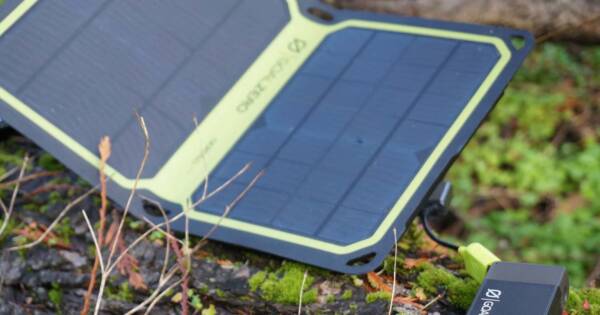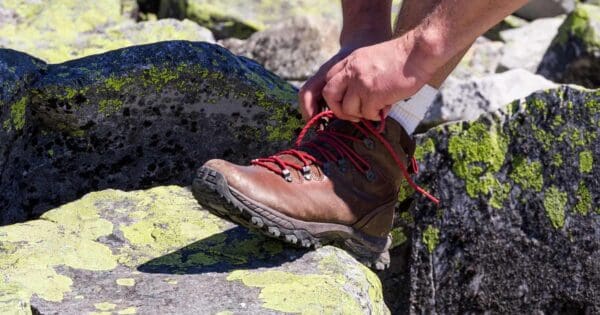Cutting rope, chopping food, and fixing items around the camp are just a few uses for a high-quality hiking knife when on a hike or any outdoor adventure. A proper hiking knife is a must-have piece of equipment you should always carry while exploring Australia’s beautiful landscapes. Hiking knives are often overlooked as an essential piece of gear. So consider adding one to your pack.

If you’re still searching for the right piece of equipment, here’s a few tips on what to look for. One challenge with finding the perfect hiking knife is there are so many online retailers claiming to offer the best fixed-blade camp knives and hiking folding knives it might be difficult to know if you’re picking the right one.
Before making a purchase, check out this brief guide to learn about all the essential features and variables your next hiking knife should have. You can then make a better informed decision on the piece of equipment that will make your future hiking adventures safer and help you deal with tricky situations.
Types of hiking knives
It’s up to you to decide which knife is the best fit for your trekking and hiking adventures. However, for certain activities, some hiking knives are more appropriate than others as some things out in the wild can only be performed with particular hiking knives.
Depending on your needs and proficiency, you may purchase hiking knives in various styles, including lightweight pocket knives, fixed-blade knives, and high-tech blades for tasks like woodcarving. Nevertheless, if you’re just a regular hiker, you should remember that most of the hikers’ demands can be easily satisfied even with a proper inexpensive hiking knife.
Here’s the three main types of hiking knives that you might want to consider adding to your outdoor arsenal.
Hiking knife that folds up
A small, folding knife may be your best hiking knife option. In most cases, the blade is held firmly in position by a locking mechanism included in these knives. They are convenient because they can be folded into a much smaller package and kept without needing a sheath since the handle serves as the sheath when the knife is folded up.

The best folding pocket knife is one that, when folded, takes very little space, adds minimal weight and does not require a separate sheath to be worn. However, some people may find that it is too small and more challenging to keep clean, which are two possible downsides of this very convenient, portable, and practical hiking knife.

Some people prefer fixed-blade knives more than even the most incredible folding knives because fixed-blade knives do not have any moving components and are therefore less likely to break than folding knives. In addition, because they are often larger than other blades, using them for extended periods is less tiring and more comfortable. Most of the time, trekkers and hikers with large hands are best served by selecting a hiking knife with a fixed blade.
However, while fixed blade knives have a longer lifespan and are probably more user-friendly than folding pocket knives, you should remember that you will need a separate sheath to carry them safely on your trips.
Hiking knife that’s also a multi-tool or a Swiss army knife
These knives are small toolboxes combined into a single portable item with a blade. The most excellent hiking multi-tool knife can help you perform various tasks, whether you enjoy a day hike around Wilsons Prom or the Larapinta.
Typically, multi-tools come with thirteen to fifteen tools for various activities. You may use them for cutting wood, cleaning fingernails, opening food packets, and just about anything else you can think of while in the wilderness.
Pay attention to the knife’s handle
Now that you understand the three main types of hiking knives you might want to add to your outdoor arsenal, let’s take a closer look at another essential feature you should pay attention to when purchasing your new gear—its handle.
It’s recommended that the handle of a hiking knife comes with a rough surface for a better grip and is moulded for ergonomic comfort to ensure your own safety. But what material should your future hiking knife handle be composed of? Knife manufacturers use several different materials, including wood, metals, and composite materials, to make the handle.

Handles made of wood that are an appropriate length are pleasant to grasp, but they are sensitive to being damaged by water if not well protected. Curved plastic handles, despite their low cost and resistance to water damage, can become slippery when wet, decreasing your ability to maintain a firm grasp.
There are also hiking knives that come with rubber handles. While rubber is comfortable to grasp and water resistant, you should make sure that the rubber used on your hold is sturdy and durable as cheap material can deteriorate quickly. Handles made of aluminium and stainless steel are durable but can be icy to the touch and dangerously slippery when wet.
As you may have guessed, there are endless possibilities when considering the right handle for your hiking knife. Whatever solution you opt for, ensure that the material makes sense when considering how and where you will use the knife and make sure you are comfortable using the selected handle for extended periods while outdoors.
Weight and portability are important too
When considering outdoor hiking gear, portability and lightweight construction are rightfully considered to be of utmost importance. After all, when going for a hike, the last thing anyone wants to be doing is dragging about a knife that is both large and heavy. On the other hand, a tiny lightweight knife might not be appropriate for handling many of the tasks you require it for outdoors.
For that reason, its recommended you to get something that you’ll be comfortable carrying with you every time you head out in nature and something that can get the job done without any issues. The ideal weight range for a knife for everyday hiking use should be between 100 and 500 grams.

Final thoughts
The demands of hiking require a compact, trustworthy, and functional hiking knife for use on the trail. A knife is a handy and essential item to pack, whether you’re going on a day hike with the kids or a multi-day trek along the Overland Track in Tassie. A quality hiking knife will greatly assist with a range of outdoor duties including meal preparation, first aid, gear repairs, and even starting a fire, so choose your knife carefully and enjoy your future outdoor adventures.






I went through a phase of collecting a few knives when I started backpacking/hiking a few years back. After getting over the fact that I wasn’t John Rambo fighting for survival in the wilderness I’ve found Opinel knives to be great. They’re light, robust, perfect for food prep and capable enough for carving emergency tent pegs (and possibly defending yourself from a wilderness manhunt if you’re John Rambo on a good day).